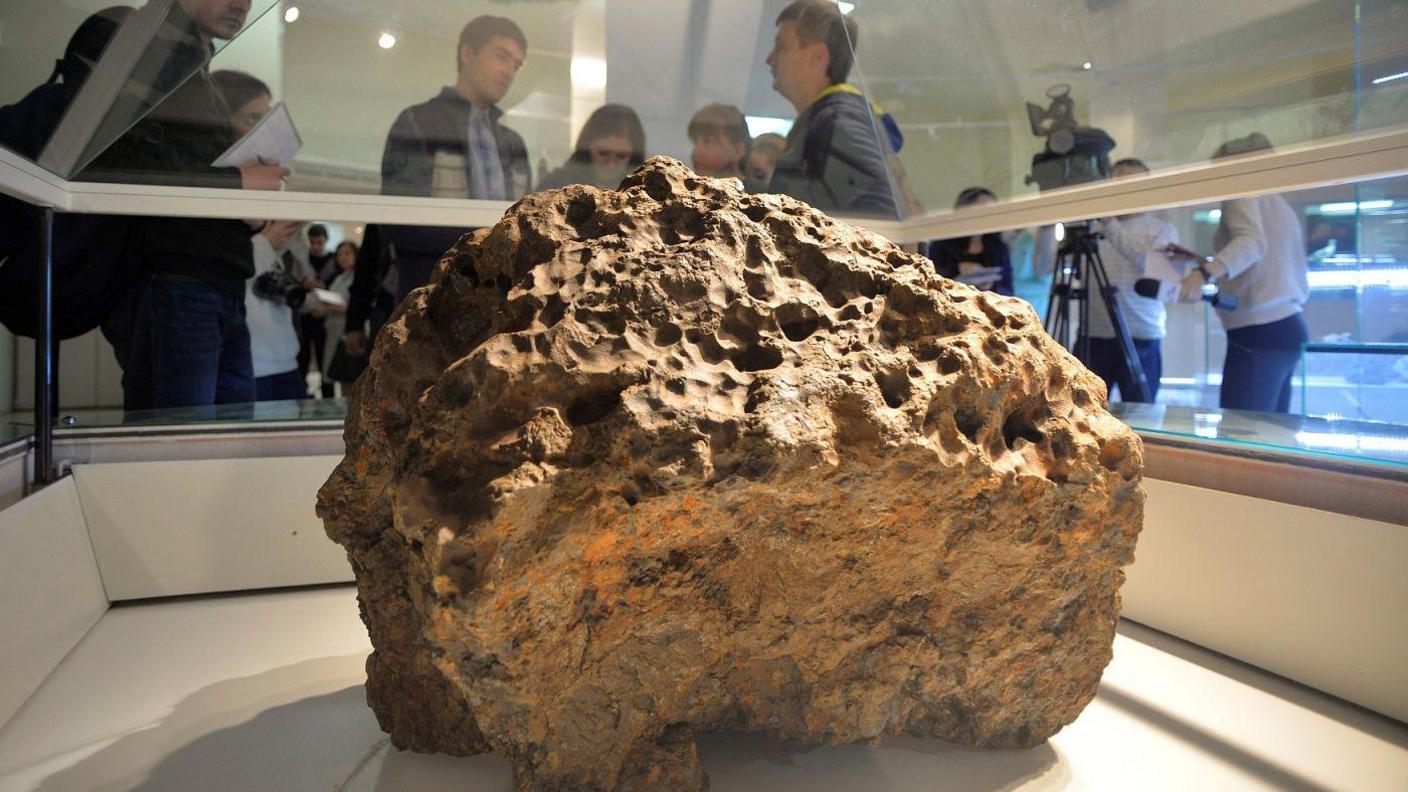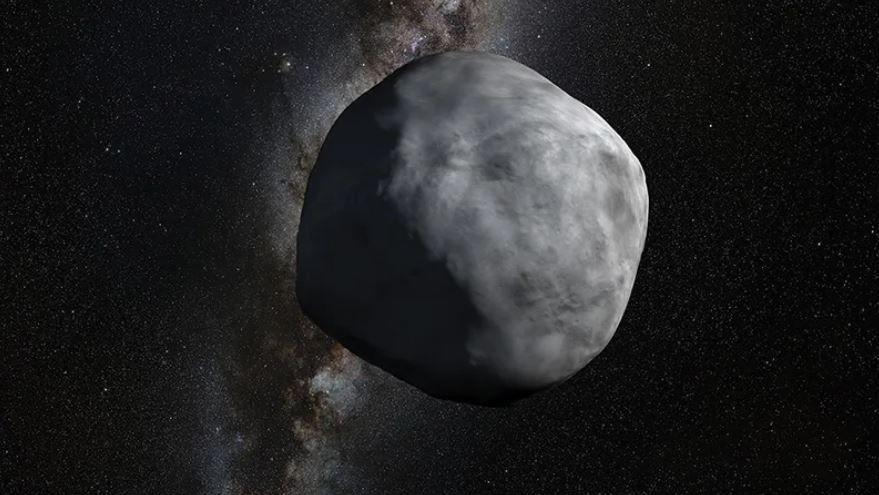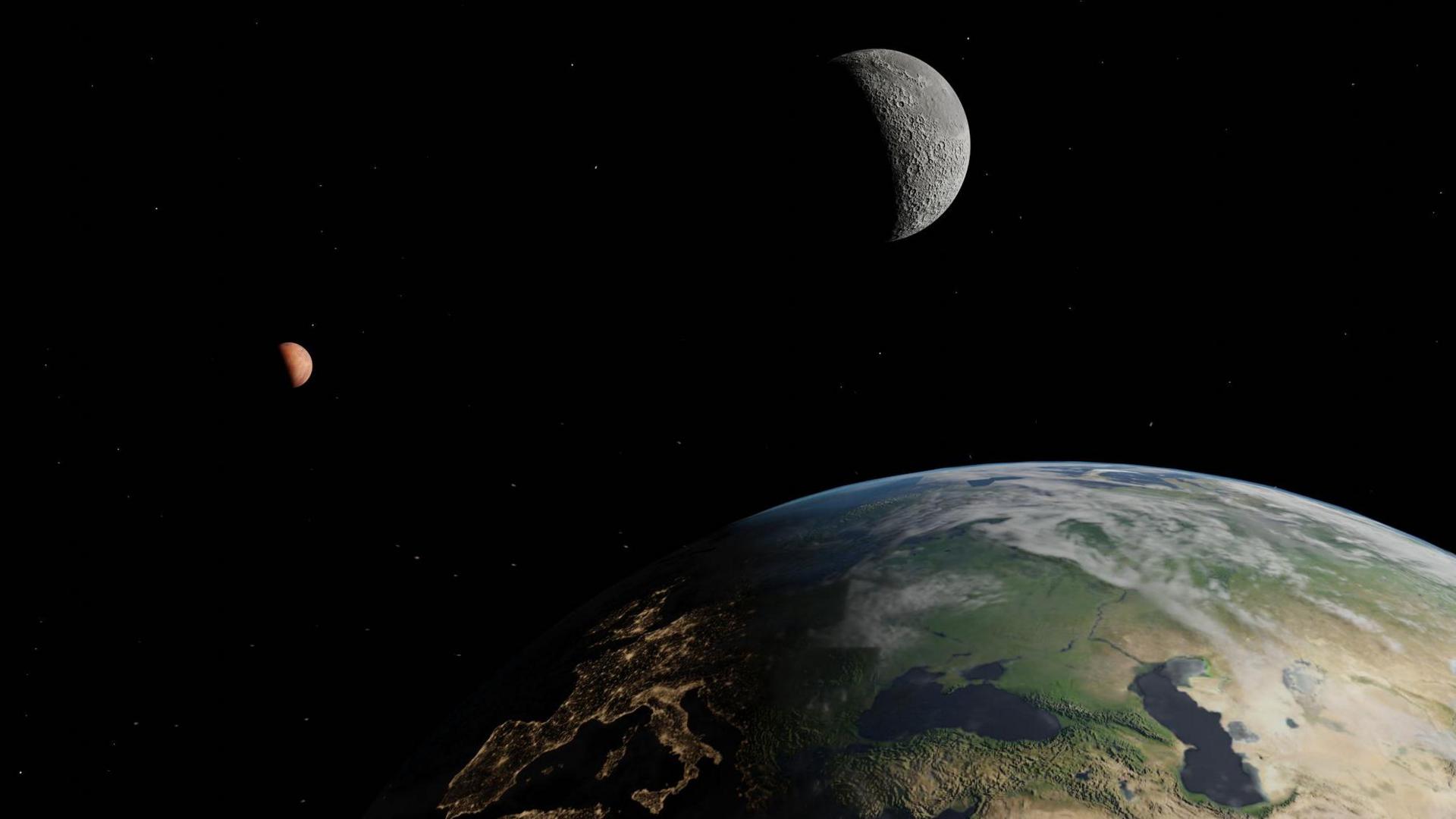Where do most of Earth's space rocks come from?

New studies have revealed where the majority of meteorites which fall to Earth have come from
- Published
Space rocks, or meteorites have been pelting our planet for millions of years.
Most of those rocks simply burn up in our atmosphere, however there are some collisions that have had a huge impact.
For a long time, exactly where these meteorites came from remained largely unknown.
But now there's been a study of the make-up of meteorites that have landed on Earth over the years and the asteroids in our solar system.
From that a team of astronomers have shown that about 70% of known meteorite impacts came from just three groups of asteroids in our solar system's main asteroid belt between Mars and Jupiter.
Confused? Find out more
- Published13 February 2023

The research has helped experts to trace the origins of tens of thousands of known meteorites that have landed on Earth.
Astronomers carried out computer simulations that enabled them to model the formation and evolution of families of asteroids orbiting the Sun.
The three asteroid families, called Karin, Koronis and Massalia, were formed by collisions in the main asteroid belt 5.8, 7.5 and about 40 million years ago.
And experts are pointing the finger at one family in particular.
More like this
- Published22 October 2024
- Published18 October 2024
- Published19 September 2023
The researchers say 37% of known meteorites have come from the Massalia family.
"It is a group of asteroids which have similar orbits because they were fragments created during a collision between two asteroids," said astronomer Miroslav Brož of Charles University in Prague who is the lead author of two of the studies.
Collisions between space rocks in the main asteroid belt send rocky fragments flying through space, with some of those eventually striking Earth.

Researchers say less than 1% of the meteorites that fall to Earth come from Mars and the moon
The studies showed that while the Massalia asteroid family accounts for the majority of known Earth meteorites, the Karin family and the Koronis family account for a class of meteorites called H chondrites that represent 33% of known Earth meteorites.
About 6% of the meteorites can be traced to Vesta, which is one of the largest objects in the asteroid belt, and previous research has found less than 1% of the meteorites came from Mars and the Moon.
"While more than 70,000 meteorites are known, only 6% had been clearly identified by their composition as coming from the moon, Mars, or Vesta," said astronomer Michaël Marsset of the European Southern Observatory in Chile who is also a lead author one of the studies.
"The source of the other meteorites had remained unidentified."
The researchers plan to continue their research to find out where the remainder of Earth's known meteorites come from.
More of the latest stories
- Published18 October 2024

- Published24 October 2024

- Published24 October 2024

